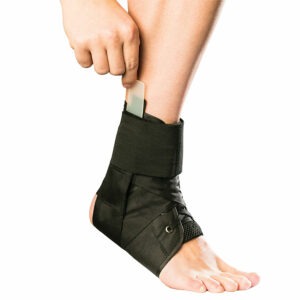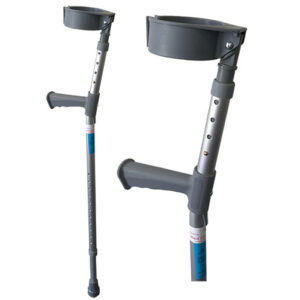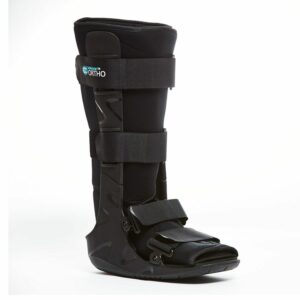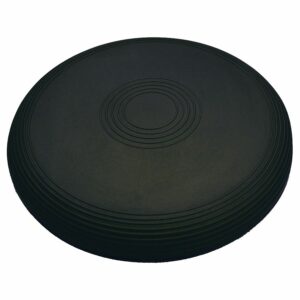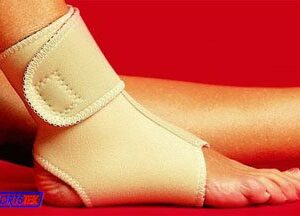Fibula Fracture
Updated:
(Also known as a Fractured Fibula, Fractured Lateral Malleolus, Broken Fibula)
What is a fibula fracture?
A fibula fracture is a relatively common condition characterized by a break in the smaller of the long bones of the lower leg, known as the fibula (figure 1).
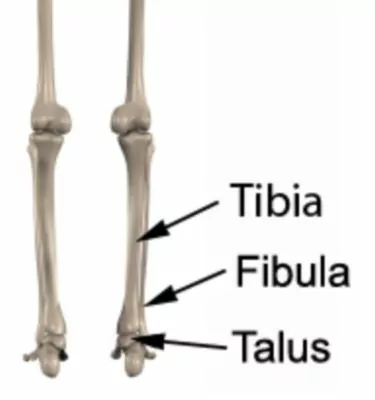
The lower leg comprises of 2 long bones, known as the fibula and the tibia, which are situated beside each other (figure 1). The fibula bone lies on the outer aspect of the lower leg and forms joints with the tibia (near the knee and ankle) and the talus in the ankle (figure 1).
During certain activities, such as landing from a jump, a forceful impact to the outer lower leg or ankle, or when rolling an ankle, stress is placed on the fibula bone. When this stress is traumatic and beyond what the bone can withstand a break in the fibula may occur. This condition is known as a fibula fracture.
A fibula fracture is common among the elderly, but can also occur in the younger patient. Often a fracture to the fibula occurs in combination with other injuries such as a sprained ankle, dislocated ankle or other fractures of the foot, ankle or lower leg (such as following trauma).
Fibula fractures can vary in location, severity and type including avulsion fracture, stress fracture, Potts’ fracture, lateral malleolus fracture, displaced fracture, un-displaced fracture, greenstick, comminuted, Weber A, B or C fracture etc.
Causes of a fibula fracture
A fibula fracture commonly occurs in association with a rolled ankle particularly with significant weight bearing forces. They may also occur due to an awkward landing from a jump (particularly on uneven surfaces), due to a fall, following a direct blow to the outer lower leg or ankle or during a motor vehicle accident. Fibula fractures are common in running and jumping sports involving change of direction such as football, soccer, rugby, basketball and netball.
Signs and symptoms of a fibula fracture
Patients with this condition typically experience a sudden onset of sharp, intense outer ankle or lower leg pain at the time of injury. This often causes the patient to limp or be unable to weight bear so as to protect the injury. With ongoing rest, pain can occasionally settle quickly leaving patients with an ache at the site of injury that may be particularly prominent at night or first thing in the morning.
Patients with a fibula fracture may also experience swelling, bruising and pain on firmly touching the affected region of bone. Pain may also increase during certain movements of the foot, ankle or knee or when standing or walking (particularly up or down hills, on uneven surfaces or whilst carrying a heavy object). In severe fibula fractures (with bony displacement), an obvious deformity may be noticeable.
Diagnosis of a fibula fracture
A thorough subjective and objective examination from a physiotherapist or doctor is essential to assist with diagnosis of a fibula fracture. An X-ray is usually required to confirm diagnosis and assess the severity of the fracture. Further investigations such as an MRI, CT scan or bone scan may be required, in some cases, to assist with diagnosis and assess the severity of the injury.
Treatment for a fibula fracture

Members Only ContentBecome a PhysioAdvisor Member to gain full access to this exclusive content. For more details see Become a Member. Already a member? Login Now
Prognosis of a fibula fracture
Patients with a fractured fibula usually make a full recovery with appropriate management (whether surgical or conservative). Return to activity or sport can usually take place in weeks to months and should be guided by the treating physiotherapist and specialist.
In patients with severe injuries involving damage to other bones, soft tissue, nerves or blood vessels, recovery time may be significantly prolonged. In patients with only very minor fractures that are un-displaced (such as an avulsion fracture) return to sport can sometimes occur in as little as 6 weeks as guided by the treating physiotherapist.
Physiotherapy for a fibula fracture

Members Only ContentBecome a PhysioAdvisor Member to gain full access to this exclusive content. For more details see Become a Member. Already a member? Login Now
Other intervention for a fibula fracture

Members Only ContentBecome a PhysioAdvisor Member to gain full access to this exclusive content. For more details see Become a Member. Already a member? Login Now
Exercises for a fibula fracture
The following exercises are commonly prescribed to patients with a fibula fracture following confirmation that the fracture has healed or that pain free mobilisation can commence as directed by the surgeon. You should discuss the suitability of these exercises with your physiotherapist prior to beginning them. Generally, they should be performed 3 times daily and only provided they do not cause or increase symptoms.
Your physiotherapist can advise when it is appropriate to begin the initial exercises and eventually progress to the intermediate, advanced and other exercises. As a general rule, addition of exercises or progression to more advanced exercises should take place provided there is no increase in symptoms.
Initial Exercises
Foot and Ankle Up and Down
Move your foot and ankle up and down as far as possible and comfortable without pain (figure 2). Repeat 10 – 20 times provided there is no increase in symptoms.
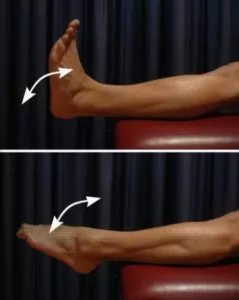
Foot and Ankle In and Out
Move your foot and ankle in and out as far as possible and comfortable without pain (figure 3). Repeat 10 – 20 times provided there is no increase in symptoms.
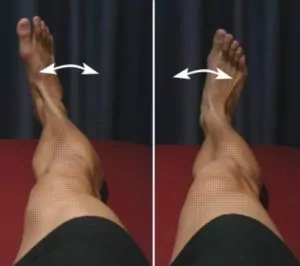
Foot and Ankle Circles
Move your foot and ankle in a circle as large as possible and comfortable without pain (figure 4). Repeat 10 times in each direction provided there is no increase in symptoms.
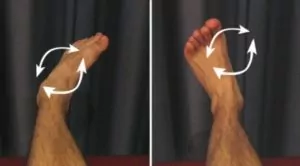
Intermediate Exercises

Members Only ContentBecome a PhysioAdvisor Member to gain full access to this exclusive content. For more details see Become a Member. Already a member? Login Now
Advanced Exercises

Members Only ContentBecome a PhysioAdvisor Member to gain full access to this exclusive content. For more details see Become a Member. Already a member? Login Now
Other Exercises

Members Only ContentBecome a PhysioAdvisor Member to gain full access to this exclusive content. For more details see Become a Member. Already a member? Login Now
Rehabilitation Guide for a Fibula Fracture

Members Only ContentBecome a PhysioAdvisor Member to gain full access to this exclusive content. For more details see Become a Member. Already a member? Login Now
 Find a Physio
Find a Physio
Find a Physiotherapist in your local area who can treat this condition.
 Physiotherapy products for a fibula fracture
Physiotherapy products for a fibula fracture
Some of the most commonly recommended products by physiotherapists to hasten healing and speed recovery in patients with this condition include:
To purchase physiotherapy products for a fibula fracture click on one of the above links or visit the PhysioAdvisor Shop.
 More information
More information
- Ankle Stretches.
- Ankle Strengthening Exercises.
- Balance Exercises
- How to use Crutches
- Ice or Heat
- R.I.C.E. Regime.
- Return to Running Program.
- Return to Sport.
- Ankle Taping.
- Why is my injury not Improving?
- Ankle Diagnosis Guide.
Become a PhysioAdvisor Member

Link to this Page
If you would like to link to this article on your website, simply copy the code below and add it to your page:
<a href="https://physioadvisor.com.au/injuries/lower-leg/fibula-fracture”>Fibula Fracture – PhysioAdvisor.com</a><br/>A fibula fracture is characterised by a break in the smaller of the long bones of the lower leg. Explore its causes, symptoms, diagnosis & treatment now.
Return to the top of Fibula Fracture.

